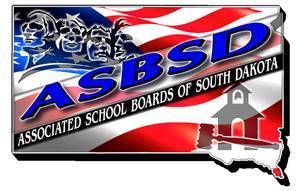Below are three options SASD and ASBSD have compiled for school boards and districts to consider should they choose to hold your upcoming school board meetings remotely. We are not endorsing any of the services, but simply wanted to make you aware of what may be available to your school board and district.
We suggest you consult with your technology specialist about the options listed below to make sure they have knowledge or are comfortable setting up any of them and that they are tested before your meeting is scheduled to be held.
Options for Remote School Board Meetings:
Phone Conference Option – The state (Bureau of Information and Technology BIT) offers a phone bridge for conference calls. The cost is $2.00 per person that you expect to be using the bridge. You will pay for as many as you tell them whether they are used or not. There limit is 150 persons. The state sets up the bridge and provides you with the call-in number and code to participate. Your school board members, administrators, and public would all use the same call-in information. This number and code would be shared with the public so they could take part in the meeting. If an executive session is needed, you set up a second bridge through BIT that you would use. That cost is also $2.00 per line but would be limited to how many need to be in on the executive session. Your board would hang up and call the second number. Once executive session is over, they would hang up and call back into the original bridge using the same number and code.
- To Schedule a bridge: https://bit.sd.gov/forms/requestconference.aspx.
- Phone: 605.773.3011 (call for additional questions or to make a reservation).
Video Conferencing – You could use Zoom, or some other form of video conferencing for your meetings. There is some danger in using this format if you don’t take some precautions. If you open the video conference up to everyone, there is a chance you could have “trolls” that join your meeting without you knowing. There have been cases where “trolls” have shown unacceptable content or language to everyone on the call. If you choose to use video conferencing such as Zoom, we suggest only including board members and required administrators in the conference. You can protect this by sending the login information as well as the password to those you want on the video call. You would still need to have a phone in conference portion for the public. You would have to provide a “bridge” between the video conference and the phone line using a speaker phone next to a computer that is on the Zoom conference so the public can hear the board members and administrators speaking. If you needed to go into executive session, you could mute the phone call, or hang it up and advise people to call back in at a certain time such as 7:45 to re-convene the regular meeting.
- Zoom information: https://zoom.us/ (zoom is offering free access on a limited basis to educators)
Closed Circuit Television – For those of you that have your own local channel, you have a few more options. You could have one person taking part in the meeting from the room where the cameras can broadcast out to the public. Your board members and administrators can then be bridged either through video conference, phone conference, or a combination of the two. Your public can view the board meeting via the broadcast and could have the opportunity for public input by calling a number designated by the school. The phone calls into the meeting could be on a speaker phone in the broadcast center that could be heard by all participating via the tv broadcast, video conference, or phone conference.
